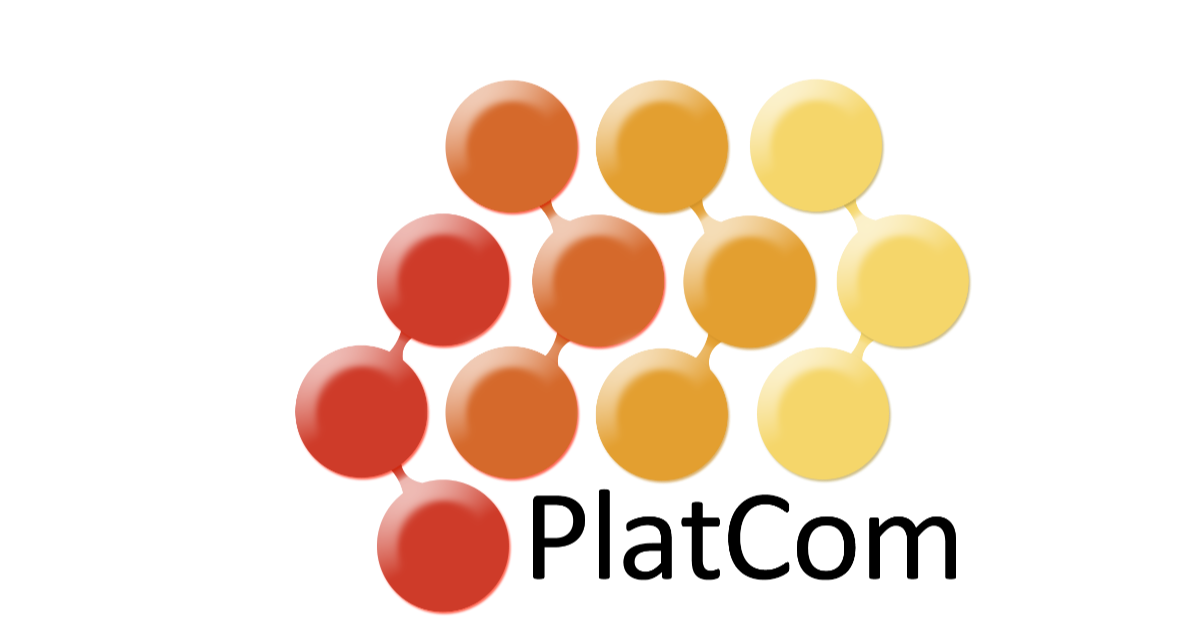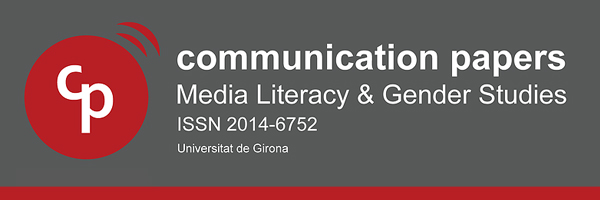Day: 1 septiembre, 2015
Happy Onlife’ – a video game to support mediation on internet risks and opportunities
Happy Onlife’ – a video game to support mediation on internet risks and opportunities
Stephane Chaudron
Rosanna Di Gioia
Monica Gemo
Kaat Lagae
Abstract:
Children and young people are very active users of digital technology from an early age. Recent research shows that children learn quickly from mirroring the behaviour of parents, of older siblings and peers. On one hand, children have acquired independency and skills within the digital world; on the other, they lack reflective and critical thinking as well as awareness about opportunities and risks such as cyber-bullying or digital identity theft. Active adult’s mediation would allow for the integration of values and critical thinking but so far, adults seem poor active mediators and in need of practical tools of empowerment. Therefore, we developed Happy Onlife, a game to support players towards a happy online life. This interactive video game aims at empowering teachers and parents to actively guide children to become smarter, responsible, and respectful when using digital media. We chose an experimental and empirical approach and the design of the game repeatedly undertook the elicitation, representation and validation steps. Happy Onlife presents key messages about children’s use, overuse, and risks of misuse of digital technologies and provides simple and clear strategies of prevention, mediation or remediation. Tests beds have proved the efficiency of the video game’s questions to prompt discussion between generations and drives the players towards a responsible and safe digital media use. Happy Onlife can be considered as an effective tool to support adults’ mediation to children for a healthy and safe internet and digital technology use.
Keywords:
digital safety, citizenship values, ethical aspects of new ICT technologies, video game, digital living, serious games, educational gaming, digital mediation, cyber-security, learning
Cómo citar:
Chaudron, S.; Di Gioia, R.; Gemo, M. & Lagae, K. (2015) Happy onlife’ – A video game to support mediation on internet risks and opportunities, en Communication Papers, 4, 6, 47-62.
Recuperado de:
http://ojs.udg.edu/index.php/CommunicationPapers/article/view/183/4StephaneChaundron
Body Art. Cuerpo y espacio corporal. Las acciones artísticas realizadas con el cuerpo crean nuevas realidades espaciales consideradas arte
Body Art. Cuerpo y espacio corporal. Las acciones artísticas realizadas con el cuerpo crean nuevas realidades espaciales consideradas arte
Body Art. Body and Corporal Space. The artistic actions done with the body creates new space based realities considered art
Celia Balbina Fernández Consuegra
Resumen:
Este artículo tiene como objetivo el estudio del llamado Body Art, cuando los artistas utilizan el cuerpo emplazándolo en el espacio y utilizándolo como arquitectura corporal. Justificamos este estudio debido a que las piezas de Body Art realizadas por los artistas articulan unas obras donde se investiga las relaciones existentes entre el espacio-tiempo y el cuerpo; algunas piezas muestran cómo la acción corporal crea el espacio. Basándonos en el análisis simbólico que propone Victor Turner como metodología de estudio, analizamos las piezas de los artistas pioneros en esta forma de creación artística, demostrando que fueron piezas de lo que hoy conocemos con el nombre genérico de Performance Art. Llegamos a diferentes conclusiones en esta investigación: que el Body Art es el lenguaje de expresión del Performance Art; en todas las piezas analizadas, el cuerpo del artista es el símbolo dominante; la característica más sobresaliente del Body Art es la provocación al espectador; las piezas analizadas exhiben un valor efímero y un carácter híbrido ya que se combinan diferentes expresiones artísticas para producir la obra (acción corporal, música, video, proyecciones en pantallas y en televisores); las acciones artísticas no producen ningún objeto artístico que pueda ser comprado o vendido, la acción que realiza el cuerpo en el espacio, es la obra artística.
Abstract:
This article is an investigation whose objective is the study of the so-called Body Art, where artists use the body placing it on space and using it as corporal architecture. We justify this study because the Performance Art works done by the artists articulate some works which investigates the relationship between space-time and the body; some pieces show how the body action creates space. Based on symbolic analysis proposed by Victor Turner as the methodology for this study, we analyze the works of the pioneering artists in this form of artistic creation, demonstrating that were parts of what is now known by the generic name of Performance Art. We arrived at different conclusions in this study: that the Body Art is the language of expression of Performance Art; in all the works analyzed the artist’s body is the dominant symbol; the most outstanding feature of Body Art is the provocation of the viewer; the works analyzed exhibit an ephemeral value and a hybrid character as different artistic expressions are combined to produce the work (bodily action, music, video, film and television projections); artistic actions do not produce any art object that can be bought or sold, the action done by the body in space is the artwork.
Keywords:
body; space; Performance Art; Body Art; symbols.
Palabras clave:
cuerpo; espacio; Performance Art; Body Art; símbolos
Cómo citar:
Balbina-Fernández-Consuegra, C. (2015) Body Art. Cuerpo y Espacio Corporal. Las acciones artísticas realizadas con el cuerpo crean nuevas realidades espaciales consideradas arte, en Communication Papers, 4, 6, 32-46.
Recuperado de:
http://ojs.udg.edu/index.php/CommunicationPapers/article/view/197/3CeliaBalbina
Mensajes sexistas y denigrantes para las mujeres como reclamo comercial: análisis de las campañas publicitarias de Natan
Mensajes sexistas y denigrantes para las mujeres como reclamo comercial: análisis de las campañas publicitarias de Natan
Sexist and offensive messages to women as commercial claim: analysis of advertising campaigns Natan
Leticia Anoro Bellosta
Manuel Montes
Resumen:
Las campañas publicitarias de Natan Jewelry han obtenido diversos galardones internacionales, a pesar de contar con unos enunciados promocionales que han sido calificados por los expertos como sexistas y denigrantes para las mujeres. Nuestro propósito ha sido analizar la puesta en escena de estos contenidos, cuestionados por su calidad ética y moral, de tal modo que a través de una cuidada representación, combinando los recursos plásticos y apoyándose en la retórica, ofrecen una comunicación visual elegante, opuesta al mensaje implícito, pero evidente, que tiene como trasfondo. Se ha concluido que los enunciados retóricos de la sinécdoque y la comparación, así como los recursos plásticos del ángulo de la toma, el empleo del fuera de campo, unidos al mensaje abierto cuyo significado debe completar el destinatario del mensaje, propician una comunicación efectiva y, de este modo, favorecen la aceptación de un enunciado de dudosa calidad ética.
Abstract:
The advertising campaigns of Natan Jewelry have received international awards, despite showing promotional messages that have been rated by experts as sexist and demeaning to women. Our purpose was to analyze the staging of these contents, criticized by its ethics and moral quality, having in mind that through a careful representation, combining the plastic resources and relying on rhetoric, they manage to offer an elegant visual communication, opposed to the implicit but clear message which lies behind. It has been concluded that the rhetorical statements of synecdoche and comparison together with the plastic resources of the angle gaze, the use of offscreen attached to an open message whose meaning should be completed by the addressee, foster an effective communication and thus enables the acceptance of statements with ethical questionable quality.
Keywords:
sexist advertising; offensive messages; woman; Natan; advertising rhetoric; plastic resources
Palabras clave:
publicidad sexista; polémica social; recursos plásticos; retórica publicitaria
Cómo citar:
Anoro-Bellosta, L. y Monte, M. (2015) Mensajes sexistas y denigrantes para las mujeres como reclamo comercial: análisis de las campañas publicitarias de Natan, en Communication Papers, 4, 6, 23-31.
Recuperado de:
http://ojs.udg.edu/index.php/CommunicationPapers/article/view/182/2ManuelMontes
Media treatment along the International Women’s Day (IWD) to “women’s” issue in the reference newspapers (Zaragoza- Spain)
Media treatment along the International Women’s Day (IWD) to “women’s” issue in the reference newspapers (Zaragoza- Spain)
María Gómez y Patiño
Abstract:
This study presents the results of the analysis made upon the newspapers of Aragon1 (Spain) on the issue “women” during the International Women’s Day (IWD) (8th-March-2012). This analysis is based on the comparison of two printed newspapers, focusing on three angles: 1) quantitative analysis of articles in any section; 2) qualitative analysis of the linguistic and journalistic treatment and, 3) analysis of the Agenda Setting and its journalistic and political convergence. The aim is to show the differences as far as the social and political engagement is concerned, according to their agenda-setting which is related to the public and political agendas at different extents. El Periódico de Aragón is much more engaged, than Heraldo de Aragón, with the IWD being coherent with the ideological and editorial line, creating the corresponding public opinion among their readers.
Keywords:
Gender, Agenda setting, Mass media effects, International Women’s Day (IWD).
Cómo citar:
Gómez-Patiño, M. (2015) Media treatment along the International Women’s Day (IWD) to “women’s” issue in the reference newspapers (Zaragoza- Spain), en Communication Papers, 4, 6, 11-22.
Recuperado de:
http://ojs.udg.edu/index.php/CommunicationPapers/article/view/176/1GomezPati%C3%B1o
Presentación Communication Papers
Presentación Communication Papers
Núria Fernández García
Resumen:
Con el presente número Communication Papers se aproxima al mundo de los videojuegos, una de las formas más extendidas de entretenimiento y de método de simulación, lo que ha hecho que sea uno de los componentes dominantes de la cultura global. Como bien se apuntaba en el call for papers del número, no sólo son productos comerciales sino que también son objetos estéticos, contextos de aprendizaje, simuladores de entorno y fenómenos culturales.
Cómo citar:
Fernández-García, N. (2015) Presentación Communication Papers, en Communication Papers, 4, 6, 9-10.
Recuperado de:
http://ojs.udg.edu/index.php/CommunicationPapers/article/view/204/Presentaci%C3%B3n
Editorial Communication Papers
Editorial Communication Papers
Carmen Echazarreta Soler
Resumen:
Cuando nos reunimos el equipo de redacción de Communication Papers para decidir el tópico de este número seis que presentamos ahora, acababan de publicarse los datos de consumo de videojuegos y observamos el incremento exponencial de los últimos años, superando incluso, en los más jóvenes, al consumo de cine y televisión. Dada la trascendencia de este dato en todos los ámbitos, empresarial, educativo y cultural, y conscientes de la necesidad de conocer las investigaciones que se están llevando a cabo, acordamos proponer la tríada vinculante a los tres ámbitos. El resultado fue El Videojuego: Arte, Industria y Educación.
Cómo citar:
Echazarreta-Soler, C. (2015) Editorial Communication Papers, en Communicaton Papers, 4, 6, 7-8.
Recuperado de:
http://ojs.udg.edu/index.php/CommunicationPapers/article/view/203/Editorial
- ← Previous
- 1
- 2

